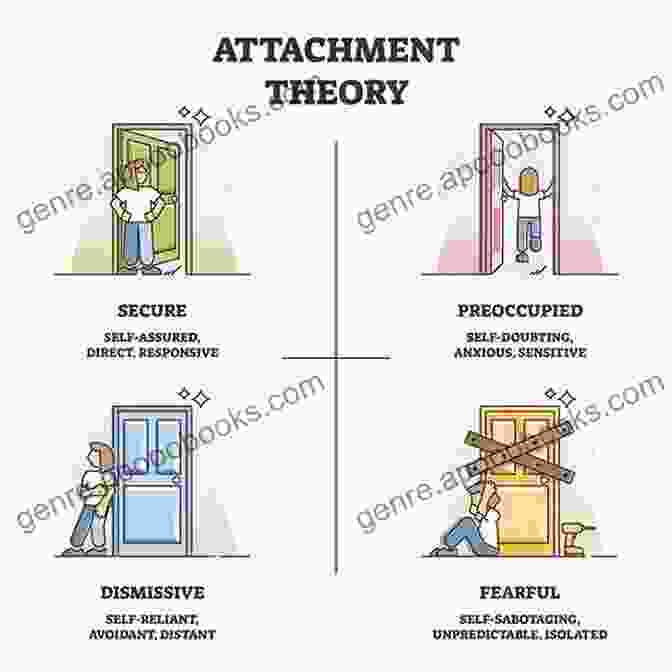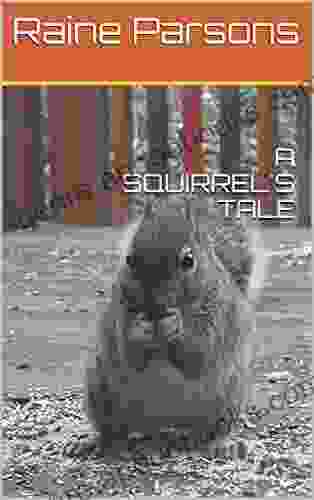Unlocking Intimacy: A Comprehensive Guide to Transforming Unhealthy Relationship Habits Through Attachment Theory

Are you struggling to break free from patterns of unhealthy relationship behaviors? Do you find yourself yearning for deep and fulfilling connections, only to encounter recurring disappointments and heartbreak? If so, embracing the principles of attachment theory can be a transformative journey toward understanding and overcoming these challenges.
4.4 out of 5
| Language | : | English |
| File size | : | 233 KB |
| Text-to-Speech | : | Enabled |
| Screen Reader | : | Supported |
| Enhanced typesetting | : | Enabled |
| Word Wise | : | Enabled |
| Print length | : | 49 pages |
| Lending | : | Enabled |
This comprehensive guide will delve into the profound insights of attachment theory, providing you with a roadmap to identify and address your attachment style, develop healthier coping mechanisms, and cultivate lasting, fulfilling relationships.
Attachment Theory: The Foundation
Attachment theory, pioneered by John Bowlby, explores the profound impact of early childhood experiences on the development of our emotional bonds. It suggests that our interactions with primary caregivers shape our subconscious beliefs about ourselves, others, and relationships, forming an internal working model that guides our behavior in intimate settings.
There are three primary attachment styles:
- Secure: Individuals with secure attachments feel loved, valued, and supported. They trust others easily and form healthy, long-lasting relationships.
- Anxious-Ambivalent: Anxious-ambivalent individuals crave intimacy but struggle with trust and self-worth. They often engage in clingy or needy behaviors, fearing abandonment.
- Avoidant: Avoidant individuals suppress their need for intimacy. They are uncomfortable with closeness and may withdraw or sabotage relationships to avoid emotional vulnerability.
Understanding Unhealthy Relationship Behaviors
Unhealthy relationship behaviors stem from insecure attachment styles. These behaviors can include:
- Jealousy and Possessiveness: Anxious-ambivalent individuals may exhibit excessive jealousy or possessiveness, as they fear losing the love and support they crave.
- Control and Manipulation: Avoidant individuals may engage in controlling or manipulative behaviors to maintain a distance and avoid intimacy.
- Fear of Abandonment: Both anxious-ambivalent and avoidant individuals may experience intense fear of abandonment, driving them to cling to relationships or push them away.
- Low Self-Esteem: Insecure attachment can lead to low self-esteem and a negative self-image, making it difficult to form healthy, balanced relationships.
Transforming Unhealthy Habits
Breaking free from unhealthy relationship behaviors requires a transformative journey of self-discovery and growth.
- Identify Your Attachment Style: The first step is to gain insight into your attachment style. This can be achieved through self-reflection or by seeking professional guidance.
- Rewire Your Internal Working Model: Once you understand your attachment style, you can begin to rewire your internal working model by challenging negative beliefs and developing healthier coping mechanisms.
- Build Secure Relationships: Surround yourself with supportive and understanding individuals who create a safe and nurturing environment.
- Practice Self-Compassion: Be kind and compassionate to yourself, recognizing that change takes time and effort.
- Seek Professional Help: If necessary, don't hesitate to seek professional help from a therapist or counselor who specializes in attachment theory.
Embracing attachment theory is an empowering tool for understanding and transforming unhealthy relationship behaviors. By recognizing your attachment style, developing healthier coping mechanisms, and building secure connections, you can break free from the cycle of disappointment and cultivate fulfilling, lasting relationships.
This comprehensive guide provides a roadmap for this transformative journey. With a deep understanding of attachment theory, you can unlock intimacy and create a life filled with meaningful and fulfilling relationships.

4.4 out of 5
| Language | : | English |
| File size | : | 233 KB |
| Text-to-Speech | : | Enabled |
| Screen Reader | : | Supported |
| Enhanced typesetting | : | Enabled |
| Word Wise | : | Enabled |
| Print length | : | 49 pages |
| Lending | : | Enabled |
Do you want to contribute by writing guest posts on this blog?
Please contact us and send us a resume of previous articles that you have written.
 Book
Book Novel
Novel Page
Page Chapter
Chapter Text
Text Story
Story Genre
Genre Reader
Reader Library
Library Paperback
Paperback E-book
E-book Magazine
Magazine Newspaper
Newspaper Paragraph
Paragraph Sentence
Sentence Bookmark
Bookmark Shelf
Shelf Glossary
Glossary Bibliography
Bibliography Foreword
Foreword Preface
Preface Synopsis
Synopsis Annotation
Annotation Footnote
Footnote Manuscript
Manuscript Scroll
Scroll Codex
Codex Tome
Tome Bestseller
Bestseller Classics
Classics Library card
Library card Narrative
Narrative Biography
Biography Autobiography
Autobiography Memoir
Memoir Reference
Reference Encyclopedia
Encyclopedia Susan Rose Ackerman
Susan Rose Ackerman Tamar Herman
Tamar Herman P D Workman
P D Workman Tim Crouch
Tim Crouch Lemn Sissay
Lemn Sissay Sheila J Nayar
Sheila J Nayar Nicole Lee
Nicole Lee Kim Johnson
Kim Johnson Marcia L Tate
Marcia L Tate Rachel Mcpherson
Rachel Mcpherson Peter Avery
Peter Avery Robert Mckee
Robert Mckee Kimberly Readnour
Kimberly Readnour Pranay Patil
Pranay Patil Pinoy Stitch
Pinoy Stitch Mads Walther Hansen
Mads Walther Hansen Michael Harrington
Michael Harrington Laura Ware
Laura Ware S Leigh Savidge
S Leigh Savidge William P Fox
William P Fox
Light bulbAdvertise smarter! Our strategic ad space ensures maximum exposure. Reserve your spot today!

 J.R.R. TolkienSquirrel Tale Bankers And Dog Biscuits: An Unforgettable Tale of Adventure...
J.R.R. TolkienSquirrel Tale Bankers And Dog Biscuits: An Unforgettable Tale of Adventure... Craig CarterFollow ·12.9k
Craig CarterFollow ·12.9k Jeffery BellFollow ·7.6k
Jeffery BellFollow ·7.6k Preston SimmonsFollow ·8k
Preston SimmonsFollow ·8k Dawson ReedFollow ·17.9k
Dawson ReedFollow ·17.9k Darnell MitchellFollow ·6.1k
Darnell MitchellFollow ·6.1k Henry Wadsworth LongfellowFollow ·19.8k
Henry Wadsworth LongfellowFollow ·19.8k Jared PowellFollow ·16.2k
Jared PowellFollow ·16.2k Ernest ClineFollow ·12.2k
Ernest ClineFollow ·12.2k

 Finn Cox
Finn CoxCarmen Suite For Flute Quartet (G Alto Flute) ( Carmen...
Experience the Magic of...

 Andy Cole
Andy ColeUncover Hidden Truths: A Comprehensive Guide to Detecting...
: The Silent...

 Ken Simmons
Ken SimmonsUnleash Your Potential: Transform Frustration and...
Are you tired of feeling...

 Rick Nelson
Rick NelsonHard To Kill: A Gripping Thriller That Will Keep You on...
Tom Rollins is a...

 Ivan Turner
Ivan TurnerUnleash the Power of Your Breath: Discover Breath...
In the tapestry of life, where stress and...
4.4 out of 5
| Language | : | English |
| File size | : | 233 KB |
| Text-to-Speech | : | Enabled |
| Screen Reader | : | Supported |
| Enhanced typesetting | : | Enabled |
| Word Wise | : | Enabled |
| Print length | : | 49 pages |
| Lending | : | Enabled |












